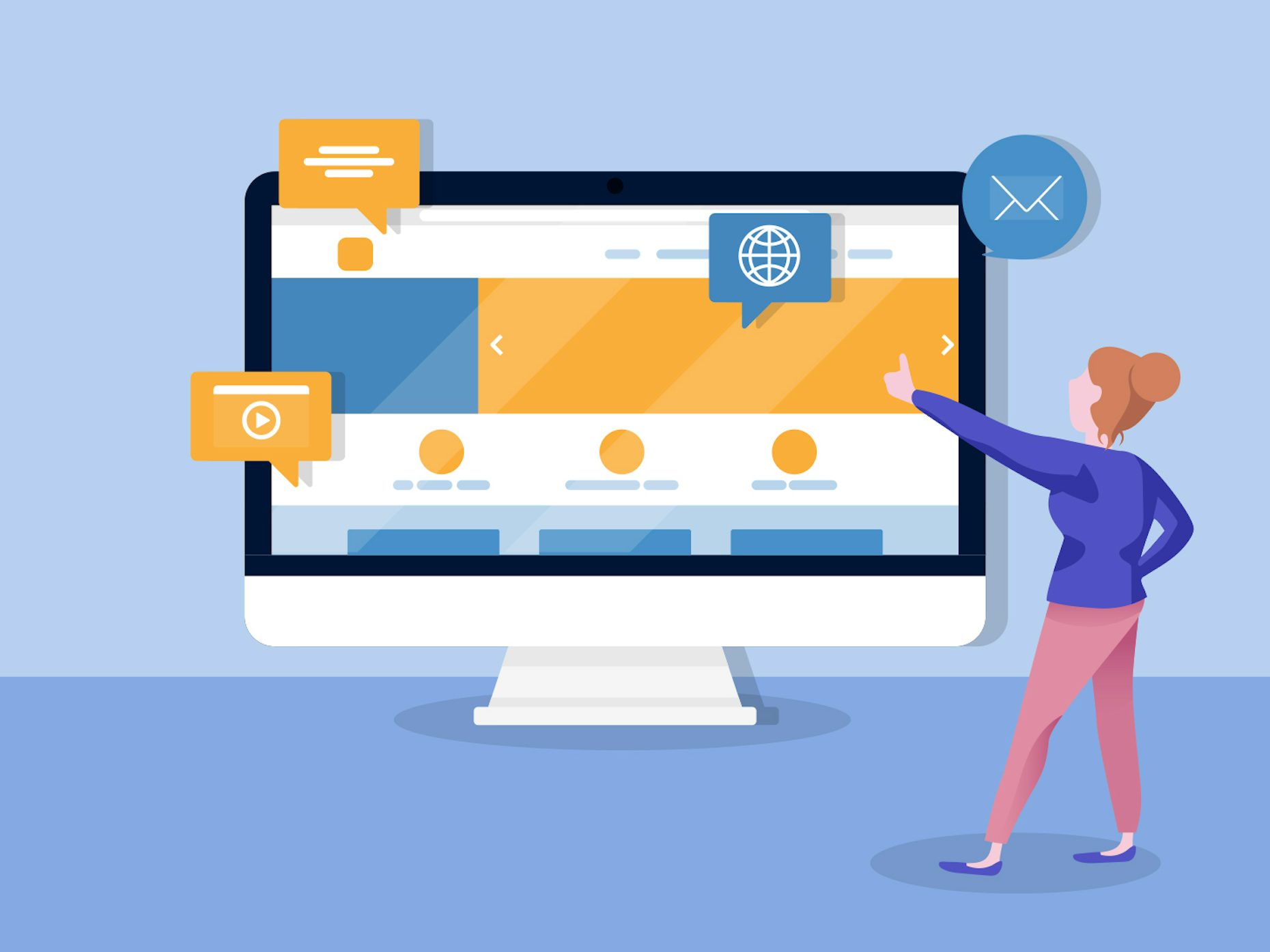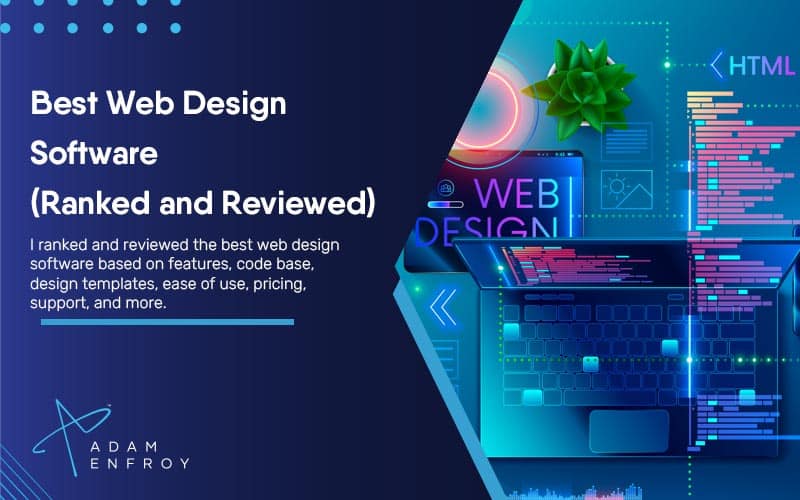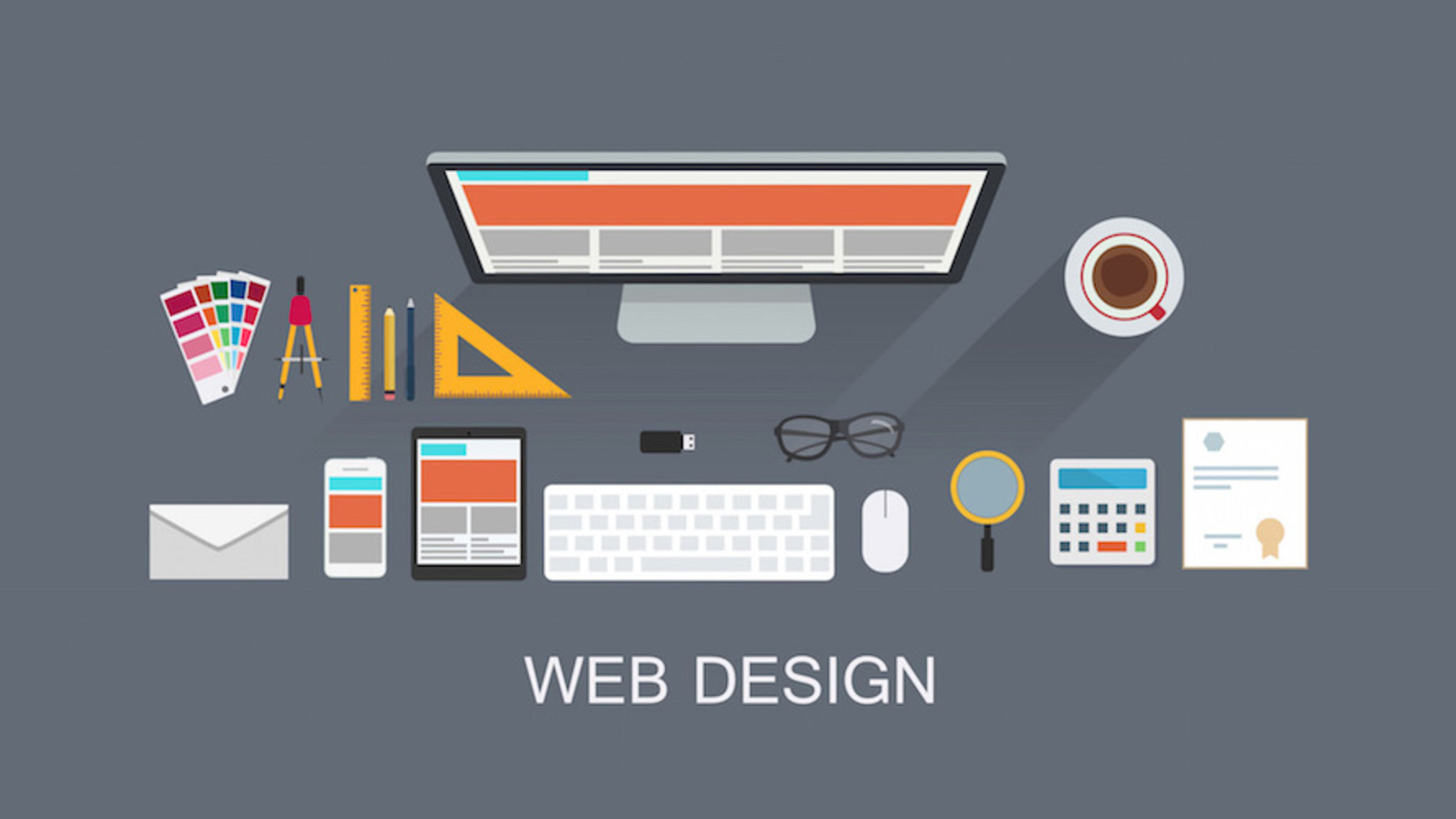All Categories
Featured
Table of Contents
- – Why Web Design Is Dead - - Ux Magazine Tips an...
- – What Does A Web Designer Do? - Careerexplorer...
- – What Is Web Design? A Comprehensive Guide - W...
- – Web Design Services - Networksolutions.com Ti...
- – 34 Of The Best Website Designs To Inspire You...
- – The Top 10 Most Important Elements Of A Websi...
- – Web Developers And Digital Designers - Burea...
- – Web Design Company In Orlando, Florida And B...
- – Web Design Company In Orlando, Florida And B...
- – Learn Web Design With Online Courses, Classe...
- – Collaborate & Create Amazing Graphic Design ...
Why Web Design Is Dead - - Ux Magazine Tips and Tricks:
Quick summary Functionality and the utility, not the visual design, identify the success or failure of a site. Because the visitor of the page is the only individual who clicks the mouse and for that reason chooses whatever, user-centric design has actually developed as a standard method for successful and profit-oriented website design - web design frederick md.
and the utility, not the visual style, identify the success or failure of a site. Since the visitor of the page is the only person who clicks the mouse and for that reason decides everything, user-centric design has ended up being a standard approach for successful and profit-oriented website design. If users can't utilize a function, it might as well not exist.
g. where the search box ought to be placed) as it has currently been carried out in a number of articles; instead we focus on the approaches which, used properly, can cause more sophisticated design choices and streamline the procedure of viewing presented information. Please notice that you may be thinking about the usability-related articles we have actually released before: Principles Of Great Site Style And Reliable Web Design Standards, In order to use the principles appropriately we first need to comprehend how users engage with sites, how they believe and what are the basic patterns of users' behavior.
What Does A Web Designer Do? - Careerexplorer Tips and Tricks:
Visitors glimpse at each new page, scan some of the text, and click on the first link that catches their interest or vaguely resembles the thing they're trying to find. In fact, there are big parts of the page they do not even look at. The majority of users search for something intriguing (or beneficial) and clickable; as quickly as some appealing candidates are discovered, users click.
If a page provides users with top quality content, they are prepared to jeopardize the content with ads and the design of the website. This is the reason why not-that-well-designed sites with premium content get a lot of traffic over years. Material is more vital than the style which supports it.

Users do not check out, they scan. Notification how "hot" locations abrupt in the middle of sentences. This is normal for the scanning process. Very simple principle: If a website isn't able to meet users' expectations, then designer failed to get his job done effectively and the business loses cash. The greater is the cognitive load and the less user-friendly is the navigation, the more prepared are users to leave the site and search for alternatives.
What Is Web Design? A Comprehensive Guide - Wix.com Tips and Tricks:
Neither do they scan website in a direct fashion, going sequentially from one site area to another one. Rather users satisfice; they pick the very first reasonable alternative. As quickly as they discover a link that looks like it might result in the objective, there is a great possibility that it will be right away clicked.
It doesn't matter to us if we understand how things work, as long as we can use them. If your audience is going to imitate you're developing signboard, then design terrific signboards." Users wish to be able to manage their web browser and rely on the constant information discussion throughout the website.
If the navigation and site architecture aren't intuitive, the variety of enigma grows and makes it harder for users to understand how the system works and how to receive from point A to point B. A clear structure, moderate visual hints and quickly identifiable links can assist users to find their path to their objective.
Web Design Services - Networksolutions.com Tips and Tricks:

Given that users tend to explore websites according to the "F"-pattern, these three declarations would be the first components users will see on the page once it is packed. The style itself is basic and instinctive, to comprehend what the page is about the user requires to browse for the response.
As soon as you've attained this, you can communicate why the system is helpful and how users can benefit from it. Don't Misuse Users' Perseverance, In every job when you are going to offer your visitors some service or tool, attempt to keep your user requirements minimal.
Newbie visitors are prepared to, not filling long web forms for an account they may never use in the future. Let users explore the site and discover your services without requiring them into sharing private information. It's not reasonable to force users to get in an email address to test the feature.
34 Of The Best Website Designs To Inspire You In 2022 Tips and Tricks:
Stikkit is a perfect example for an user-friendly service which needs nearly nothing from the visitor which is inconspicuous and comforting. And that's what you desire your users to feel on your website. Obviously, Termite needs more. However the registration can be carried out in less than 30 seconds as the type has horizontal orientation, the user doesn't even need to scroll the page.
A user registration alone is enough of an impediment to user navigation to minimize incoming traffic. 3. Manage To Focus Users' Attention, As sites offer both fixed and dynamic material, some aspects of the interface attract attention more than others do. Undoubtedly, images are more appealing than the text simply as the sentences marked as bold are more appealing than plain text.
Focusing users' attention to particular areas of the site with a moderate use of visual components can assist your visitors to get from point A to point B without thinking about how it actually is expected to be done. The less concern marks visitors have, the they have and the more trust they can develop towards the business the site represents.
The Top 10 Most Important Elements Of A Website Design Tips and Tricks:
4. Pursue Function Direct exposure, Modern web styles are normally slammed due to their approach of assisting users with visually appealing 1-2-3-done-steps, big buttons with visual impacts etc. But from the design viewpoint these aspects really aren't a bad thing. On the contrary, such as they lead the visitors through the website content in a very easy and user-friendly way.
The website has 9 main navigation choices which are noticeable at the very first glance. What matters is that the material is well-understood and visitors feel comfy with the way they engage with the system.
Rather a rate: just what visitors are looking for. An optimal service for reliable writing is touse short and concise expressions (come to the point as rapidly as possible), use scannable design (classify the material, use multiple heading levels, use visual components and bulleted lists which break the flow of uniform text blocks), usage plain and unbiased language (a promotion does not need to sound like ad; offer your users some sensible and unbiased reason why they ought to utilize your service or remain on your website)6.
Web Developers And Digital Designers - Bureau Of Labor ... Tips and Tricks:
Users are hardly ever on a website to delight in the style; additionally, most of the times they are searching for the information despite the style - web design frederick md. Pursue simplicity rather of complexity. From the visitors' perspective, the very best site design is a pure text, with no ads or additional content obstructs matching precisely the inquiry visitors used or the material they've been trying to find.
Finch clearly provides the info about the website and offers visitors a choice of alternatives without overcrowding them with unnecessary content. 7. Don't Hesitate Of The White Area, In fact it's truly hard to overestimate the significance of white area. Not only does it help to for the visitors, but it makes it possible to view the details provided on the screen.
Complex structures are harder to check out, scan, evaluate and deal with. If you have the choice in between separating two design sectors by a visible line or by some whitespace, it's typically much better to utilize the whitespace option. (Simon's Law): the better you manage to supply users with a sense of visual hierarchy, the much easier your content will be to perceive.
Web Design Company In Orlando, Florida And Bangor, Maine Tips and Tricks:
The exact same conventions and rules ought to be applied to all elements.: do the most with the least quantity of cues and visual aspects. Clearness: all components should be created so their significance is not ambiguous.
Conventions Are Our Buddies, Traditional style of site components does not result in a boring web website. It would be a functionality nightmare if all websites had different visual presentation of RSS-feeds.
comprehend what they're getting out of a site navigation, text structure, search placement etc. A common example from functionality sessions is to equate the page in Japanese (assuming your web users do not know Japanese, e. g. with Babelfish) and supply your functionality testers with a task to discover something in the page of different language.
Web Design Company In Orlando, Florida And Bangor, Maine Tips and Tricks:
Test Early, Test Typically, This so-called TETO-principle needs to be applied to every web style task as functionality tests frequently provide into substantial issues and concerns related to an offered layout. Test not too late, not too little and not for the wrong reasons.
Some important points to keep in mind: according to Steve Krug, and screening one user early in the task is better than screening 50 near the end. Accoring to Boehm's first law, errors are most frequent throughout requirements and style activities and are the more expensive the later on they are eliminated.
That means that you develop something, test it, fix it and then check it again. There may be problems which haven't been found during the first round as users were practically blocked by other problems.
Learn Web Design With Online Courses, Classes, & Lessons Tips and Tricks:

This holds for designers. After you've worked on a website for couple of weeks, you can't observe it from a fresh perspective any longer. You know how it is constructed and therefore you know precisely how it works you have the wisdom independent testers and visitors of your website wouldn't have.
It can be connected to other locations such as graphic design, user experience, and multimedia arts, but is more aptly seen from a technological perspective. It has ended up being a big part of people's everyday lives. It is tough to think of the Internet without animated graphics, different designs of typography, background, videos and music.

Throughout 1991 to 1993 the World Wide Web was born. Text-only pages could be viewed utilizing an easy line-mode internet browser. There had actually been no integrated approach to graphic design aspects such as images or noises.
Collaborate & Create Amazing Graphic Design For Free Tips and Tricks:
The W3C was created in October 1994 to "lead the World Wide Web to its complete potential by developing typical procedures that promote its evolution and guarantee its interoperability." This prevented any one business from monopolizing a propriety internet browser and shows language, which might have altered the result of the Internet as a whole.
As this has actually occurred the innovation of the web has likewise moved on. There have also been considerable modifications in the way individuals utilize and access the web, and this has actually altered how websites are designed.
Learn more about Lovell Media Group LLC or TrainACETable of Contents
- – Why Web Design Is Dead - - Ux Magazine Tips an...
- – What Does A Web Designer Do? - Careerexplorer...
- – What Is Web Design? A Comprehensive Guide - W...
- – Web Design Services - Networksolutions.com Ti...
- – 34 Of The Best Website Designs To Inspire You...
- – The Top 10 Most Important Elements Of A Websi...
- – Web Developers And Digital Designers - Burea...
- – Web Design Company In Orlando, Florida And B...
- – Web Design Company In Orlando, Florida And B...
- – Learn Web Design With Online Courses, Classe...
- – Collaborate & Create Amazing Graphic Design ...
Latest Posts
Beginner's Guide: How To Learn Web Design At Home - Medium Tips and Tricks:
Web Design Definition - Techterms Tips and Tricks:
Penner Home - Durham Web Design - Penner Web Design ... Tips and Tricks:
More
Latest Posts
Beginner's Guide: How To Learn Web Design At Home - Medium Tips and Tricks:
Web Design Definition - Techterms Tips and Tricks:
Penner Home - Durham Web Design - Penner Web Design ... Tips and Tricks: